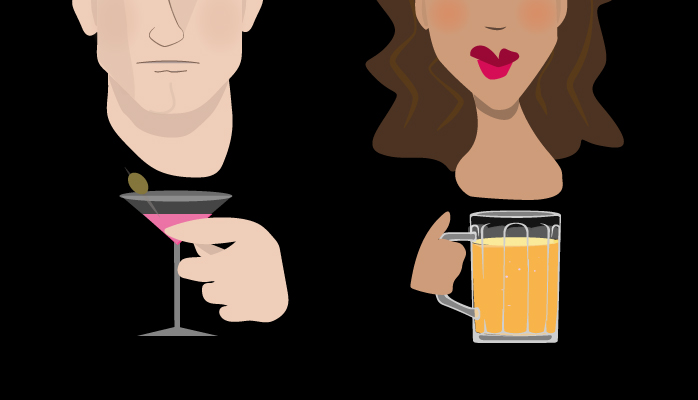How should we deal with stereotypes?
I was interviewed about using (or avoiding) stereotypes by a professor of advertising as part of a survey of creative directors. The issues, of course, are timely and evolving. What gender is Caitlyn? Who is a “thug?” What does a President look like?
The answers are not so simple.
Stereotypes exist as forms of visual or verbal shorthand to prevent thinking, to minimize the need for explanations. So do clichés, conventions, adages and dogmas.
Picture a tv spot: a customer walks up to the bank teller window, and the teller is … well, 90% of the time, young and female. If you replace her with a grey-haired businessman in a pinstripe suit, even one equally smiley and perky, many viewers would short-circuit into confusion.
I’m often reminded of my favorite Emerson quote: A sect or party is an elegant incognito devised to save a man from the vexation of thinking.
People are indeed vexed by the time-consuming, inconvenient work of thinking. Why dig deeper when you can just accept conventional wisdom? Why look for evidence when you’ve been supplied the Answer?
Embedded in stereotypes is cultural baggage, including assumptions about gender, race, age, appearance, ethnicity or many other shared “understandings.” We use a few consciously. We wink at some. Most, however, are unexamined, such as in our bank teller example.
But that’s exactly what’s wrong with stereotypes. Creative breakthroughs are sometimes ignited by bending or smashing stereotypes, forcing the audience to re-think. If you want to cause people to change how they vote or buy gasoline or donate or make choices – and you do – you can’t tell the expected story in the conventional way. Your message will be background noise, slithering into the same black hole where 99% of messages disappear.
So. Do you want your audience to think, or not?
Sometimes, no. One of the best books on web user experience (UX) design is Don’t Make Me Think by Steve Krug, where he persuasively makes the case for sticking to certain conventions. Don’t reinvent the wheel if it slows down restless web visitors who can leave in a click. Don’t, for example, capriciously substitute “holla” for “contact” in the top nav. Nobody will be wowed, and some will go away.
More often, yes. Make them think. Disrupt! There are many more times when you really truly fer sher want people to stop and wonder, to reexamine their own assumptions. You can’t bore people into changing their minds.
Look at all the waves of approval that brands got simply by casting without fanfare same-sex couples (JC Penney) or an adorable biracial child (Cheerios). Sure, it stirred up some knuckle draggers, but the backlash against haters was overwhelming. If marketing is a tool that can incite important conversations seen as socio-culturally beneficial, it will benefit the brand that blows up the stereotypes.
Hmmm. Bruce Jenner was once on a Wheaties box. I wonder if Wheaties could possibly see an opportunity to further empower Caitlyn and hire her as a spokesperson? (What are the odds?)